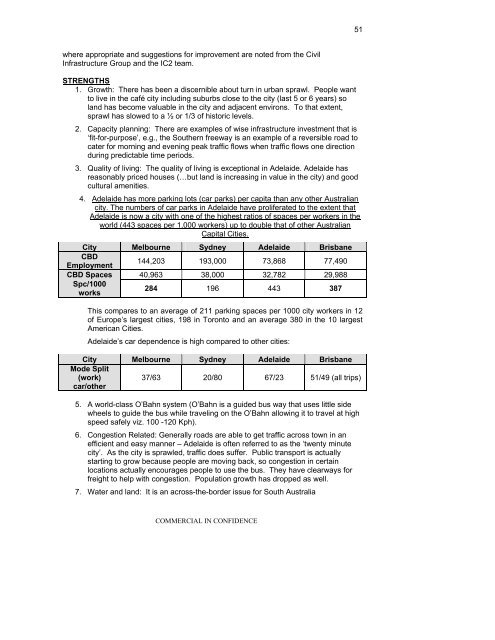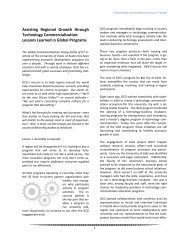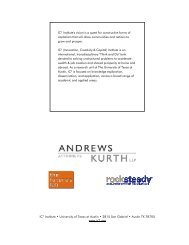“Quicklook” Assessment of Greater Adelaide's Assets & Challenges ...
“Quicklook” Assessment of Greater Adelaide's Assets & Challenges ...
“Quicklook” Assessment of Greater Adelaide's Assets & Challenges ...
Create successful ePaper yourself
Turn your PDF publications into a flip-book with our unique Google optimized e-Paper software.
where appropriate and suggestions for improvement are noted from the Civil<br />
Infrastructure Group and the IC2 team.<br />
STRENGTHS<br />
1. Growth: There has been a discernible about turn in urban sprawl. People want<br />
to live in the café city including suburbs close to the city (last 5 or 6 years) so<br />
land has become valuable in the city and adjacent environs. To that extent,<br />
sprawl has slowed to a ½ or 1/3 <strong>of</strong> historic levels.<br />
2. Capacity planning: There are examples <strong>of</strong> wise infrastructure investment that is<br />
‘fit-for-purpose’, e.g., the Southern freeway is an example <strong>of</strong> a reversible road to<br />
cater for morning and evening peak traffic flows when traffic flows one direction<br />
during predictable time periods.<br />
3. Quality <strong>of</strong> living: The quality <strong>of</strong> living is exceptional in Adelaide. Adelaide has<br />
reasonably priced houses (…but land is increasing in value in the city) and good<br />
cultural amenities.<br />
4. Adelaide has more parking lots (car parks) per capita than any other Australian<br />
city. The numbers <strong>of</strong> car parks in Adelaide have proliferated to the extent that<br />
Adelaide is now a city with one <strong>of</strong> the highest ratios <strong>of</strong> spaces per workers in the<br />
world (443 spaces per 1,000 workers) up to double that <strong>of</strong> other Australian<br />
Capital Cities.<br />
City Melbourne Sydney Adelaide Brisbane<br />
CBD<br />
144,203 193,000 73,868 77,490<br />
Employment<br />
CBD Spaces 40,963 38,000 32,782 29,988<br />
Spc/1000<br />
works<br />
284 196 443 387<br />
This compares to an average <strong>of</strong> 211 parking spaces per 1000 city workers in 12<br />
<strong>of</strong> Europe’s largest cities, 198 in Toronto and an average 380 in the 10 largest<br />
American Cities.<br />
Adelaide’s car dependence is high compared to other cities:<br />
City<br />
Mode Split<br />
Melbourne Sydney Adelaide Brisbane<br />
(work)<br />
car/other<br />
37/63 20/80 67/23 51/49 (all trips)<br />
5. A world-class O’Bahn system (O’Bahn is a guided bus way that uses little side<br />
wheels to guide the bus while traveling on the O’Bahn allowing it to travel at high<br />
speed safely viz. 100 -120 Kph).<br />
6. Congestion Related: Generally roads are able to get traffic across town in an<br />
efficient and easy manner – Adelaide is <strong>of</strong>ten referred to as the ‘twenty minute<br />
city’. As the city is sprawled, traffic does suffer. Public transport is actually<br />
starting to grow because people are moving back, so congestion in certain<br />
locations actually encourages people to use the bus. They have clearways for<br />
freight to help with congestion. Population growth has dropped as well.<br />
7. Water and land: It is an across-the-border issue for South Australia<br />
COMMERCIAL IN CONFIDENCE<br />
51





